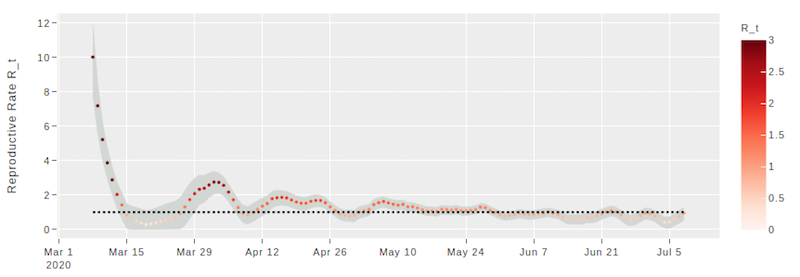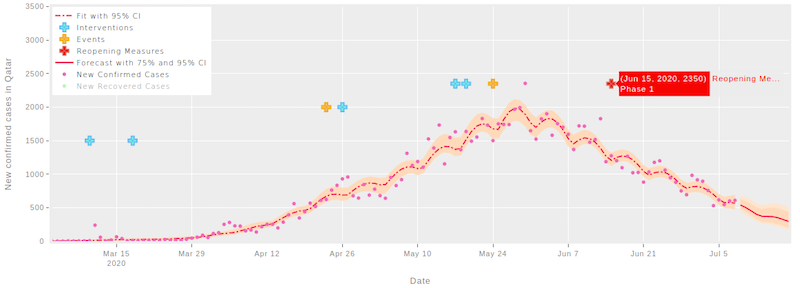Students of Hamad Bin Khalifa University (HBKU) College of Science and Engineering (CSE) successfully developed and implemented a statistical inference system that can provide projections of COVID-19 cases in Qatar.
An outcome of the students’ learning process under the CSE Master of Science in Data Science and Engineering programme, the online platform will provide users with all the necessary information to understand the severity of the pandemic at a given time and help avert activities that may cause additional exposure to the virus.
According to Shehel Yoosuf, the main objective of the application is to provide a data-driven dashboard for monitoring the COVID-19 pandemic in Qatar. Yoosuf is a graduate of Master of Science in Data Science and Engineering and a candidate of the HBKU PhD programme.
He said that the model presents daily statistics, provides a predictive number of new cases for the next 10 days and gives an estimate of the current basic reproductive number of these cases. The number can determine how fast the virus is spreading within the population.

 The model’s algorithms are based on the SIR model – a three-tier classification of the population into Susceptible, Infectious and Recovered (SIR), and key data derived from the daily number of positive cases. The system draws daily data from the website of the Ministry of Public Health, estimates variables of the infectious disease SIR model, makes predictions, and plots them based on these variables. It then feeds the information into the online platform.
The model’s algorithms are based on the SIR model – a three-tier classification of the population into Susceptible, Infectious and Recovered (SIR), and key data derived from the daily number of positive cases. The system draws daily data from the website of the Ministry of Public Health, estimates variables of the infectious disease SIR model, makes predictions, and plots them based on these variables. It then feeds the information into the online platform.
Yoosuf said they were inspired by a global study that showed how government interventions affected the progress of the pandemic using this model for Europe.
From the study, the students realised that they could get better predictions if they took into account nationwide events and preventive measures, as these factors tend to shift the spread rate, which can otherwise be assumed to be constant.
The students adapted the model to data from Qatar and extended it to also account for the daily positive cases. They said that there are many more people who are infected but not tested.
The model can be used to infer reasons as to why occasional spikes may be observed, or to measure the effectiveness of government interventions. It can also explore ‘what-if’ scenarios.
One very effective measure was enforcing masks in public and further restrictions during Eid. Yoosuf explained that this may have contributed significantly to the downward trend we see today.
In contrast, the beginning of Ramadan may have been a set back due to ‘unhindered’ gatherings and shopping rushes. Similarly, they are modelling lockdown relaxation measures and closely monitoring changes in reproductive number. Basic reproductive number estimates show that the virus has been in a decayed state since the end of May, and the first phase of easing the lockdown has been promising.
A second surge in cases is always possible, according to Yoosuf, but the model can offer insights as to how the lift is faring, especially when compared to the early days of the pandemic. Post-lockdown, such models can provide tracking insights and lessons in the unfortunate case of a future pandemic.
The web application framework can also be generalised for monitoring other infectious diseases or fluctuating waves of the current pandemic.
What makes it unique is that it incorporates governmental measures and other major events in Qatar, which can have a major impact on how the pandemic progresses. Our work is data-driven, to monitor the past and present situation during a pandemic and make rough estimations on the spread of the disease in the future, based on data.





